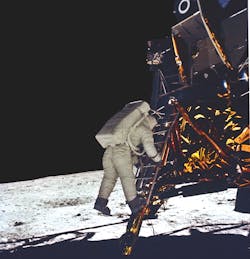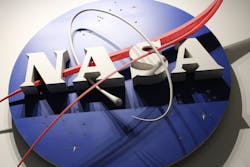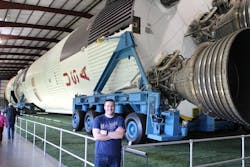Mike's Blog: Celebrating our renewed space fervor
Unless you’ve been living under a rock, you’ve seen that this past week has been the 50th anniversary of the Apollo 11 mission that sent U.S. astronauts Neil Armstrong, Buzz Aldrin, and Michael Collins as the first manned mission to the moon—with Armstrong and Aldrin the first humans to set foot on the lunar surface on July 21, 1969. Saturday was 50 years to the day since the moon landing, and was the culmination of an essentially yearlong buildup to the golden anniversary. Leading up to it throughout 2019, and at a escalating pace this summer, there have been plenty of videos, documentaries, and countless articles providing a look back into what can arguably still be considered the greatest technological achievement in human history. I contributed to that buildup last week with this blog highlighting Apolloinrealtime.org/11, which allows you to livestream the Apollo 11 mission from 1 minute before launch until returning splashdown in the central Pacific Ocean—as if it were happening in real-time. Even though the anniversary has come and gone, I highly recommend checking it out if you haven’t yet.
While the hoopla over Apollo 11 will now subside, the overall excitement over space missions certainly won’t. At least from my perspective, the level of space enthusiasm among general U.S. population is higher than I’ve ever seen it. I can only assume that fervor was drastically higher during 1969, given that an estimated 650 million people watched the moon landing worldwide—the largest audience for a live broadcast at the time.
But the moon landing had a major advantage over today’s state of space exploration/travel in terms of general interest among the public: the political backdrop. Armstrong set foot on the moon at the height of the cold war, with the mission serving as a show of technological and aerospace superiority at least as much of a triumph of space exploration. From a national perspective, Apollo 11 wasn’t a science mission; it was a statement of power.
Today, there is no defined Space Race. And while being the first country to achieve a milestone in space technology is certainly a notable achievement, there is no major political motive driving audiences to follow human-space activity or become involved in it. NASA’s percentage of the total U.S. federal budget was 3.52% in 1964; 4.31% in 1965; 4.41% in 1966; and 3.45% in 1967, falling to 2.31% by the time Apollo 11 launched. Comparatively, that percentage was .49% in 2015; .50% in 2016; and .47% in 2017.
Speaking of private companies, private enterprise is also a big part of the renewed space excitement. Elon Musk’s SpaceX has pioneered reusable rocket technology to make space travel much more cost-effective, and in an interview to be aired on CBS Sunday Morning on July 21, Musk said he expects his company will be sending a crew to Mars within 4 years. Amazon Founder Jeff Bezos’ Blue Origin is already planning commercial space tourism, as is Richard Branson-founded Virgin Galactic. Oh, and I can’t not mention the U.S. Space Force, the sixth independent military service branch that President Donald Trump directed the Pentagon to begin planning back in June 2018.
Besides all these endeavors, there are far more space education sources for the general public than ever before. YouTube has some great space technology channels worth following, while the general movement to encourage women to pursue STEM careers has resulted in an influx of female engineers interested in space.
Pop culture has also played its part. Just in the last six years, major films such as "Interstellar," "Gravity," "The Martian," and First Man—all favorites of mine—have done a great job of incorporating real science into their storytelling.
My generation hasn’t had a moon landing, or anything close to its equivalent to get riled up around about space. Don’t get me wrong: there has always been general interest in space exploration since the sixth and final Apollo moon landing in 1972, but no monumental achievement to elevate it.
It’s still mind-boggling to know we haven’t set foot beyond the earth in 47 years, given the incredible advances in technology since then. But that’s coming. We may not know specifically when humans will first land on Mars, but we can safely assume it will happen in the next 20 years. Whenever it does, it will be incredible, and will surely drive excitement about space until then and beyond.
What does this mean for electronic test & measurement?
Like with increased spending in military or aerospace, increased spending in technology used for space missions is generally good news for vendors of electronic test & measurement solutions. Whether for satellites, equipment used on the International Space Station, or spacecraft that will eventually land on the moon or Mars, components used the technology evolved will require rigorous electronic testing. Environmental testing will play a huge role, testing to ensure components properly survive the incredible vibration and temperature swings involved at launch, to functioning in the cold, vacuum of space, to functioning in the conditions of Mars, and much more. EMI/EMC testing will also be a key element.
And while NASA and the private enterprise companies that will be leading these space endeavors (SpaceX, Blue Origin, etc.) may have their own internal T&M departments in some capacity, they will likely also rely on solutions from trusted T&M solution providers.
About the Author




